| Admissions | Accreditation | Booksellers | Catalog | Colleges | Contact Us | Continents/States/Districts | Contracts | Distance Education | Emergency | Examinations | Forms | Grants | Hostels | Honorary Doctorate degree | Investment | Instructors | Lecture | Librarians | Membership | Professional Examinations | Programs | Progress Report | Recommendations | Research Grants | Researchers | Students login | School | Search | Seminar | Study Center/Centre | Sponsorship | Tutoring | Thesis | Universities | Work counseling |
Parts of the cockpit - airplane
The cockpit
| The most obvious features in a cockpit are the seats for the pilots and the instrumentation panel. However, you will also be able to find stowage areas (e.g. for documents, fire extinguishers, clothing…), as well as the pedestal, side consoles, a third (or jump) seat and access to electric and electronic compartments. | ||
| Cockpit enclosure | This is a typical layout for an aircraft cockpit. Yet, the design may change depending on manufacturers' preferences and type of aircraft. (Image: cockpit layout of the A310 MRTT Multi-Role Tanker Transport, Europe —embedded from Airforce Technology on 1 September 2009) |  |
| Seats | In modern planes, the seats in the cockpit are designed ergonomically, for comfort during long flights. A third, or jump seat, may be present, which can be used by observers (e.g. doing LOSA) or invited people (e.g. other pilots). (Image: pilots' seats and jump seat on the Airbus A380 —the embedded from Airliners.net on 1 September 2009) | 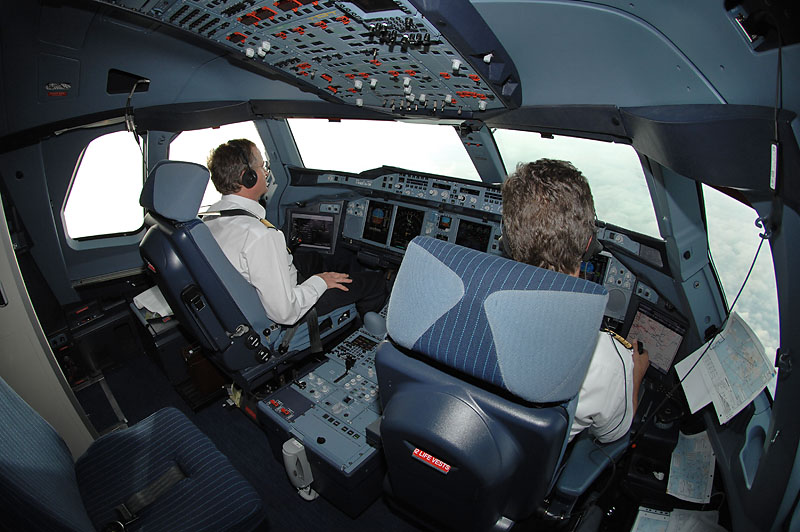 |
| Flight deck | The flight deck comprises the main displays and controls for flying the aircraft, as well as their location in the cockpit environment. A typical airliner will have the main displays in the instrumentation panel, in front of the pilots, and the controls around him (central pedestal and side consoles) and above him (overhead panel). (Image: flight deck on the Boeing 737s —embedded from Boeing on 2 September 2009) | 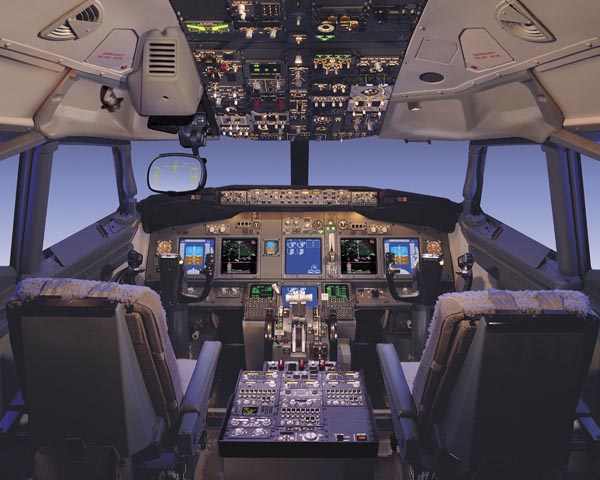 |
| Other compartments | E.g. accessories and maintenance panel. (Image: maintenance panel on the Boeing 757-200 —embedded from TCX Boeing 757-200/300 on 8 September 2009) | 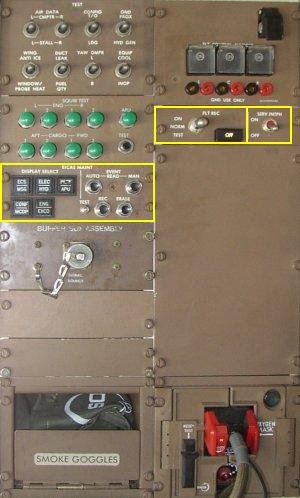 |
| The flight deck | ||
|---|---|---|
| Control column | A yoke is, perhaps, the prototypical flight control, positioned right in front of each pilot. It controls pitch (nose up/down via pull/push inputs) and roll (left/right bank via left/right turn inputs), and may control trim, as well. However, pitch and bank can also be controlled via a stick, as in some Airbus's models. (Image: yoke of a Boeing 737 —embedded from Wikimedia Commons on 2 September 2009) | 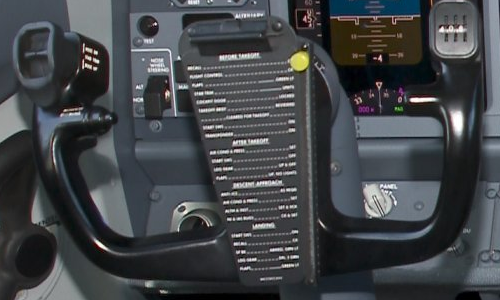 |
| Rudder pedals | They are positioned on the floor in front of the pilots, and act on the rudder, at the tail of the aircraft. They control jaw (right/left movement via push inputs on the right/left pedal) while flying, as well as steer the aircraft on the ground. (Image: cockpit of the Airbus A380, showing the rudder pedals (notice also the sidesticks instead of frontal yokes) —embedded from Photobucket on 2 September 2009) |  |
| Instrument panel | The main instrument panel holds the most important flight displays regarding both flight performance and aircraft status. (Image: custom instrument panel in a Piper Aztec —embedded from Diamondaire's weblog on 2 September 2009) |  |
| Pedestal | It normally contains the throttle and other engine controls, input keyboards for the navigational system, etc. (Image: central pedestal on a Boeing 767 —embedded from Flickr on 1 September 2009) | 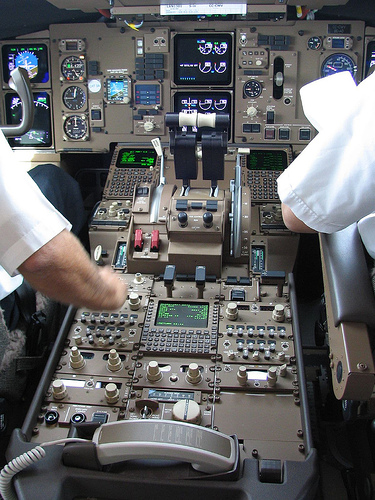 |
| Side consoles | They are used for placing the sidestick, communication instruments, documentation, etc, depending on the type of airplane. (Image: side console on the Phenom 100 —embedded from JetBrief on 1 September 2009) | 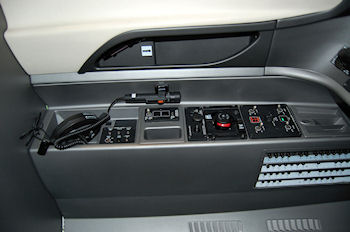 |
| Overhead panel | It contains miscellaneous controls and features not directly involved in flying. E.g. air conditioning, anti-ice controls, cabin pressurization controls, oxygen controls, etc. (Image: overhead panel on the Boeing 757-200 —embedded from TCX Boeing 757-200/300 on 8 September 2009) |  |
|
Cockpit controls Primary controls Generally the primary cockpit controls are arranged as follows: * A joystick or a control yoke governs roll and pitch by moving the ailerons (or activating wing warping on some very early aircraft designs) when turned or deflected left and right, and moves the elevators when moved backwards or forwards * Rudder pedals, or the earlier, pre-1919 "rudder bar", to control yaw, which move the rudder; left foot forward will move the rudder left for instance. * Throttle controls to control engine speed or thrust for powered aircraft. Even when an aircraft uses different kinds of surfaces, such as a V-tail/ruddervator, flaperons, or elevons, to avoid pilot confusion the aircraft will still normally be designed so that the stick or yoke controls pitch and roll in the conventional way, as will the rudder pedals for yaw. The basic pattern for modern flight controls was pioneered by French aviation figure Robert Esnault-Pelterie, with fellow French aviator Louis Blériot popularizing Esnault-Pelterie's control format initially on Louis' Blériot VIII monoplane in April 1908, and standardizing the format on the July 1909 Channel-crossing Blériot XI. Secondary controls In addition to the primary flight controls for roll, pitch, and yaw, there are often secondary controls available to give the pilot finer control over flight or to ease the workload. The most commonly-available control is a wheel or other device to control elevator trim, so that the pilot does not have to maintain constant backward or forward pressure to hold a specific pitch attitude[2] (other types of trim, for rudder and ailerons, are common on larger aircraft but may also appear on smaller ones). Many aircraft have wing flaps, controlled by a switch or a mechanical lever or in some cases are fully automatic by computer control, which alter the shape of the wing for improved control at the slower speeds used for takeoff and landing. Other secondary flight control systems may be available, including slats, spoilers, air brakes and variable-sweep wings. |
